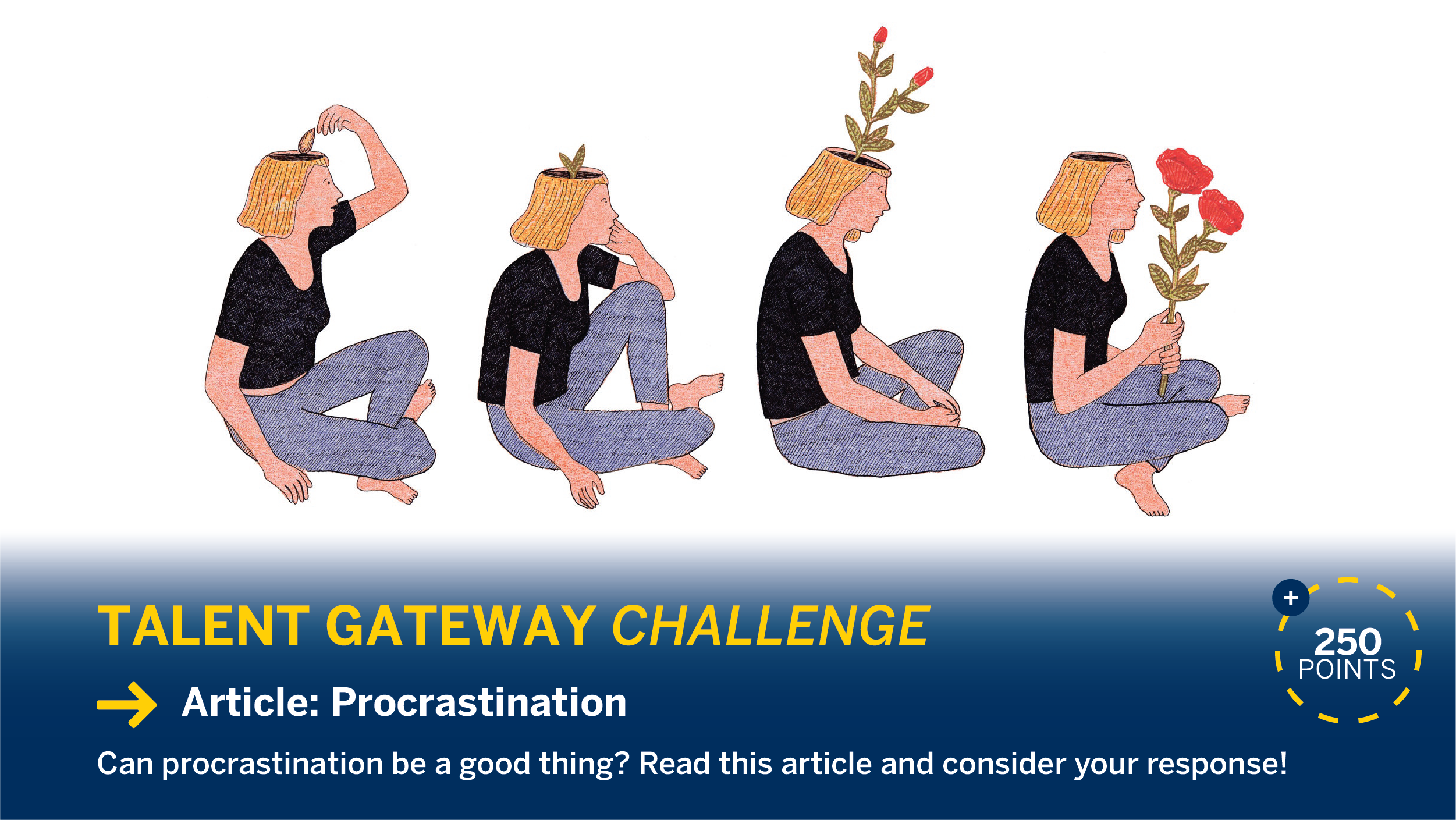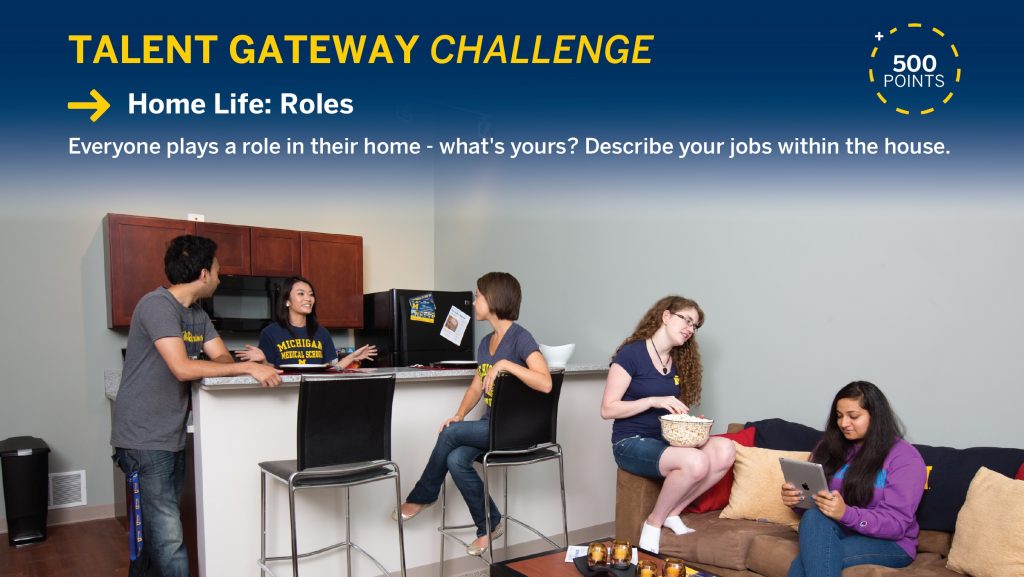
The Talent Gateway Program powered by Gradecraft fosters critical thinking and reflection at UM-Dearborn. Photo credit to: Laurie Sutch, Talent Gateway Program Director
Academic Innovation Software Tools Engagement Series
Throughout their time on campus, students learn through not just academics — but through all aspects of their experience. Many times, however, they do not recognize these moments for growth and for developing skill sets that will greatly aid them in the future. Leaders at U-M Dearborn recognized this issue — and filled that need.
The Talent Gateway at U-M Dearborn provides a platform for students to reflect on their personal, academic and professional development through a series of challenges that push students to try new things in and out of the classroom. The program is powered by GradeCraft, an online gameful learning management system created in 2014 by Barry Fishman, Arthur F Thurnau professor at the U-M School of Education and School of Information, and Caitlin Holman, associate director of R&D at the U-M Center for Academic Innovation, and their team.
Talent Gateway launched in 2016 to help students achieve career readiness. The voluntary challenges encourage students to build habits of creative and critical thinking, self reflection and application of knowledge. Now, the Talent Gateway has more than 350 challenges created by suggestions from faculty, students and employers.
Many challenges are designed to push students to try something new, including ‘Mingle,’ where students are encouraged to meet someone new on campus and ‘Say it in,’ which challenges students to do a presentation in a foreign language. Each challenge is accompanied by 3-5 reflection questions, aimed to have students think deeper about how their experiences on campus are transferable to their future, said Laurie Sutch, Talent Gateway executive director.
“Take our ‘Office Hours’ challenge. Yes, going to office hours is part of student success in and of itself, but the challenge forces students to relate the experience to their future,” Sutch said. “An example could be that at some point in your career, you’re going to have to go into a supervisor’s office and get clarification on a project. We’re trying to help students make that connection of their transferable skills.”

Many of the challenges work on fostering students’ skills through the programs 10 core competencies, eight of which are modeled from the National Association of Colleges and Employers’ career readiness competencies, and two the Talent Gateway came up with, creativity and civic engagement.
Another big aspect of the program is to try to get students out of their comfort zone, which was a key takeaway experience for many students, including recent graduate Rosa Gonzalez.
“The challenges have taught me to be more comfortable with the uncomfortable, which is essential since there will be so many situations when this happens,” Gonzalez said.
Many of the reflection questions are packaged as behavior interview questions, which helped Trevor Johnson, U-M Dearborn student in Cybersecurity & Information Assurance, when going into internship interviews.
“Many of the challenges made me significantly more ready to answer some of the more difficult questions [in interviews],” Johnson said. “For example, a question I previously struggled with was ‘Give an example of a situation where you had to overcome major obstacles to achieve your objectives.’ These kinds of questions always trip people up and are hard to answer on the spot. However, I feel very comfortable answering this question, as the Talent Gateway helped me think about it ahead of time and develop an answer that leverages my abilities and my experiences.”

The program is founded on a four pillar pedagogy that creates an environment where students are intrinsically motivated to participate: 1) Start at 0 and earn up 2) Autonomy of choice 3) Freedom to fail 4) Tangible progress. This gameful learning approach to engagement has been successful for the program: more than 10% of the entire student population (including graduate students) participate in the Talent Gateway at U-M Dearborn. The program reaches students across schools on the Dearborn campus, including graduate students.
“The thing I like the most about the Talent Gateway is that it applies to every major and every single person regardless of what stage of life they’re in,” Johnson said. “As a Cybersecurity & Information Assurance major, at first, I wondered how the Gateway would be able to apply to me, but I found that answer quickly. The Talent Gateway has developed a pathway that will allow me to become a distinguished cybersecurity professional.”
Intrinsic to the Gateway experience is the (M)Talent Distinction, an accreditation that clearly demonstrates the skills and knowledge these students have to employers. After earning 50,000 points through the challenge reflections, students present at a showcase that conveys how they have learned to make the connections between all of their living and learning experiences during their UM-Dearborn journey. The (M)Talent Distinction is then noted on their transcript, and they are given stoles to wear at graduation.
“The biggest thing I hope they recognize is that there’s a lot more transferrable experiences that they are having now that will help them in the future,” Sutch said. “There are students who can’t do co-ops and internships because of various financial reasons. But if you’re super involved in a student org and you’re managing the budget for your organization, that’s something that you can learn to talk about in a way that’s going to impact an employer in an interview. The Talent Gateway is really helping students figure out how what they are doing every day makes them more marketable, and that helps build confidence as they go into the workforce as well.
GradeCraft Today
GradeCraft has been incubated by the Center for Academic Innovation and remodeled to be implemented at more than 80 different institutions. At University of Michigan—Ann Arbor, GradeCraft has been recently adopted into Foreign Language courses with much success.
Collaborate with the Center for Academic Innovation
The Center for Academic Innovation works with faculty to create innovative software solutions for in and out of the classroom, and the technology has reached more than 85% of U-M’s current students across all campus schools and colleges. Faculty can personalize existing software for their classrooms or propose a new tool to be incubated and designed within the center. Learn more about CAI here.


